The type and placement of equipment depend on specific fire hazards, obstacles, and the building’s size
Portable fire extinguishers have proven extremely effective against small fires, with some surveys estimating that extinguishers stop them with 95% success. But because extinguishers are only designed to control fires in their earliest stages — and because fires can spread alarmingly fast – the only effective fire extinguisher is the one that’s easy to reach. In this article, we look at key sections of National Fire Protection Association (NFPA) codes and standards dealing with when fire extinguishers are needed and where they must be installed.
If you’d like to look at available products, view our selection of fire extinguishers, fire extinguisher cabinets, vehicle brackets, wall brackets, and decals plus other accessories.
Excluding family homes, buildings of all kinds are required to have fire extinguishers
Fire extinguishers are required in industrial, commercial, and residential buildings listed in NFPA 1: Fire Code. NFPA 1 mandates fire extinguishers in nearly every kind of building except family homes, duplexes, and manufactured homes.
From the 2021 edition of NFPA 1
13.6.1.2* Where Required. Fire extinguishers shall be provided where required by this Code as specified in Table 13.6.1.2 and the referenced codes and standards listed in Chapter 2.
NFPA 1 lists the types of buildings requiring portable fire extinguishers, defining them by occupancy classifications. Extinguishers must be installed in the occupancies listed in Table 13.6.1.2 of NFPA 1:
- Ambulatory health care occupancies
- Apartment occupancies
- Assembly occupancies
- Business occupancies
- Day-care occupancies
- Detention and correctional occupancies
- Educational occupancies
- Health care occupancies
- Hotel and dormitory occupancies
- Industrial occupancies
- Lodging and rooming house occupancies
- Mercantile occupancies
- Occupancies in special structures
- Residential board and care occupancies
- Storage occupancies
Further, NFPA 10: Standard for Portable Fire Extinguishers states that fire extinguishers are required in these structures even when other fire prevention systems, such as fire sprinklers, are installed.
From the 2022 edition of NFPA 10
5.1.2 The selection of extinguishers shall be independent of whether the building is equipped with automatic sprinklers, standpipe and hose, or other fixed protection equipment.
Place all extinguishers where they’re easy to see and reach
Every fire extinguisher must be placed in a visible and easy-to-reach location with the label facing out. They should be installed along hallways, in meeting rooms, near exit doors, and in other common locations. Where visibility is obstructed, visual aids must be provided.
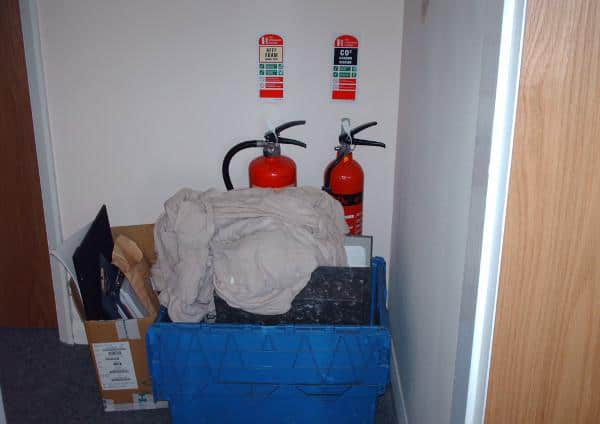
From the 2022 edition of NFPA 10
6.1.3 Placement.
6.1.3.1 Fire extinguishers shall be conspicuously located where they are readily accessible and immediately available in the event of fire.
6.1.3.2 Fire extinguishers shall be located along normal paths of travel, including exits from areas.
6.1.3.3 Visibility.
6.1.3.3.1 Fire extinguishers shall be installed in locations where they are visible except as permitted by 6.1.3.3.2 or or 6.1.3.3.3..
6.1.3.3.2* In rooms and in locations where visual obstructions cannot be avoided, signs or other means shall be provided to indicate the extinguisher location.
6.1.3.3.3 Fire extinguishers shall be permitted to be installed in fire extinguisher cabinets provided the extinguisher is visible or signs or other means are provided to indicate the extinguisher location.
6.1.3.5 Wheeled fire extinguishers shall be located in designated locations.
6.1.3.10 Label Visibility.
6.1.3.10.1 Fire extinguishers shall be installed so that the fire extinguisher’s operating instructions face outward.
The top of an extinguisher weighing 40 pounds or less may be installed as high as five feet above the floor. For heavier extinguishers, that maximum height drops to 3 1/2 feet. The base of each extinguisher must be at least 4 inches above the floor.
6.1.3.9 Installation Height.
6.1.3.9.1 Fire extinguishers having a gross weight not exceeding 40 lb (18.14 kg) shall be installed so that the top of the fire extinguisher is not more than 5 ft (1.53 m) above the floor.
6.1.3.9.2 Fire extinguishers having a gross weight greater than 40 lb (18.14 kg) (except wheeled types) shall be installed so that the top of the fire extinguisher is not more than 3 1/2 ft (1.07 m) above the floor.
6.1.3.9.3 In no case shall the clearance between the bottom of the hand portable fire extinguisher and the floor be less than 4 in. (102 mm).
Portable extinguishers without wheels must be kept on a wall bracket, on a hangar, or in an approved cabinet or wall recess. Regardless, all mounting heights must adhere to these guidelines.
Specific fire hazards and the building’s construction determine where fire extinguishers should be installed
Using the wrong extinguishing agent can backfire, making a fire drastically worse. As a result, the type of fire extinguishers needed and where they need to be placed also depend on the type and amount of combustible and flammable materials nearby.
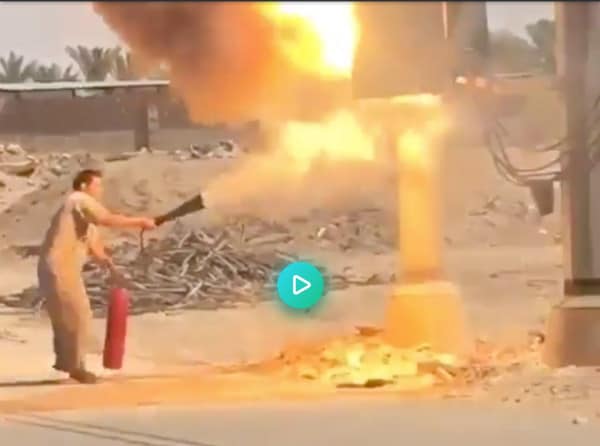
Fire extinguishers are selected and placed with two considerations in mind: the structure itself and the specific fire risks the building’s contents present.
From the 2022 edition of NFPA 10
5.5.2 Selection for Building Protection. Fire extinguishers for building protection shall be selected for Class A fires, regardless of the presence of any fixed fire suppression systems.
5.5.3 Selection for Occupancy Hazards. Fire extinguishers shall be selected for the occupancy hazards contained therein regardless of the presence of any fixed fire suppression systems.
5.5.3.1 Fire extinguishers for occupancy hazard protection shall be provided by fire extinguishers for Class A, B, C, D, or K fire hazards present or anticipated to be present.
5.5.3.2 Fire extinguishers selected for building protection shall be permitted to also be considered for occupancy hazard protection.
Extinguishers are classified according to local hazards and ambient temperature; the type and size of the fire that is most likely to occur; and the fuel type of potential fires: the specific kinds of combustible or flammable materials found in the structure. Not all things burn at the same rate or can be extinguished with the same kind of fire extinguisher: grease, oil, flammable metals, wood, and other substances burn differently. The type and amount of fuel found in a building determine the occupancy hazard — a measure of the expected severity of a fire — which, in turn, determines which kinds of extinguishers are required.
All fires, from ordinary paper fires to kitchen grease fires, belong to one of 5 fire classifications: Class A, B, C, D, or K.
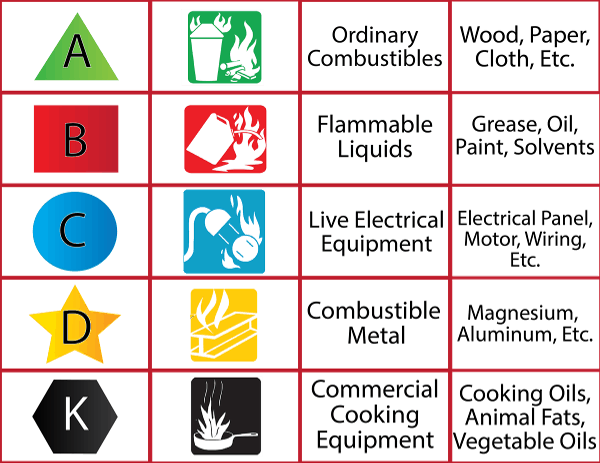
These classifications are used to categorize a building — or parts of a building — as light hazard, ordinary hazard, or extra hazard.
From the 2022 edition of NFPA 10
5.4 Classification of Hazards.
5.4.1.1* Light Hazard. Light hazard occupancies shall be classified as locations where the quantity and combustibility of Class A combustibles and Class B flammables are low and fires with relatively low rates of heat release are expected. These occupancies consist of fire hazards having normally expected quantities of Class A combustible furnishings, and/or the total quantity of Class B flammables typically expected to be present is less than 1 gal (3.8 L) in any room or area.
5.4.1.2* Ordinary Hazard. Ordinary hazard occupancies shall be classified as locations where the quantity and combustibility of Class A combustible materials and Class B flammables are moderate and fires with moderate rates of heat release are expected. These occupancies consist of fire hazards that only occasionally contain Class A combustible materials beyond normal anticipated furnishings, and/or the total quantity of Class B flammables typically expected to be present is from 1 gal to 5 gal (3.8 L to 18.9 L) in any room or area.
5.4.1.3* Extra Hazard. Extra hazard occupancies shall be classified as locations where the quantity and combustibility of Class A combustible material are high or where high amounts of Class B flammables are present and rapidly developing fires with high rates of heat release are expected. These occupancies consist of fire hazards involved with the storage, packaging, handling, or manufacture of Class A combustibles, and/or the total quantity of Class B flammables expected to be present is more than 5 gal (18.9 L) in any room or area.
5.4.1.4 Limited areas of greater or lesser hazard shall be protected as required.
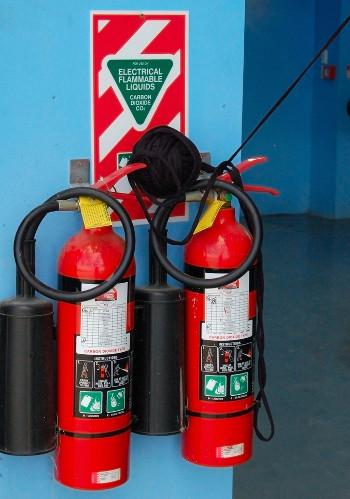
All buildings require Class A extinguishers to stop fires on walls, floors, and other parts of the building. Additionally, fire extinguishers rated for class A, B, C, D, or K hazards must be installed when those hazards are present. A single fire extinguisher capable of fighting more than one type of fire, such as a combination ABC dry chemical extinguisher, may meet the requirements for multiple fire types.
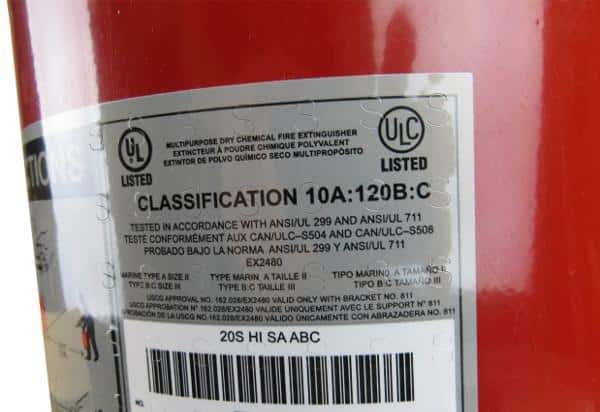
Each fire extinguisher installed in accordance with NFPA 10 must be within a certain distance of the building’s occupants at all times. This travel distance indicates how far a person must walk in order to reach the extinguisher, and all obstructions — permanent or temporary — must be accounted for.
From the 2022 edition of NFPA 10
E.1.4 Travel distance is the actual distance the user of the fire extinguisher will need to walk. Consequently, travel distance will be affected by partitions, location of doorways, aisles, piles of stored materials, machinery, and so forth.
The travel distance for Class A and Class D fire extinguishers must be 75 feet or less
Extinguishers for a building’s Class A fire hazards must be placed such that the travel distance to a fire extinguisher is no more than 75 feet at any given location. This travel distance is the same for light hazard, ordinary hazard, and extra hazard occupancies. However, as many as half of these extinguishers may be replaced by onsite hose stations (if a specific standpipe system has them) with the same travel distance.
From the 2022 edition of NFPA 10
6.2.1.2.1 The minimum number of fire extinguishers for Class A hazards for each floor of a building shall be determined by dividing the total floor area by the maximum area to be protected per extinguisher as determined by Table 6.2.1.1. (See Annex E.) …
6.2.1.2.2 Fire extinguishers shall be located so that the maximum travel distances shall not exceed 75 ft (22.9 m), except as modified by 6.2.1.4.
6.2.1.4 Up to one-half of the complement of fire extinguishers specified in Table 6.2.1.1 shall be permitted to be replaced by uniformly spaced 1 1/2 in. (38 mm) hose stations for use by the occupants of the building.
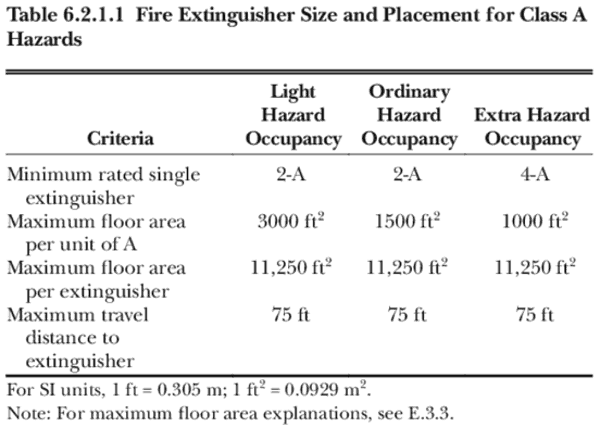
Like Class A fire extinguishers, Class D fire extinguishers must also be no more than 75 feet away.
From the 2022 edition of NFPA 10
6.5 Installations for Class D Hazards.
6.5.2 Fire extinguishers or extinguishing agents (media) shall be located not more than 75 ft (22.9 m) of travel distance from the Class D hazard. (See Section E.6.)
Fire extinguishers for areas with Class B hazards must be no more than 30–50 feet away
The travel distance for required Class B extinguishers varies with the extinguisher’s size. The numbers in the ratings listed below in table 6.3.1.1 — from 5-B to 80-B — indicate how many square feet of coverage that the extinguisher can provide. For each type of hazard, extinguishers with lower minimum ratings must be placed no more than 30 feet away, while extinguishers with higher minimum ratings may be as far as 50 feet away.
From the 2022 edition of NFPA 10
6.3 Installations for Class B Hazards.
6.3.1.3 Fire extinguishers shall be located so that the maximum travel distances do not exceed those specified in Table 6.3.1.1.
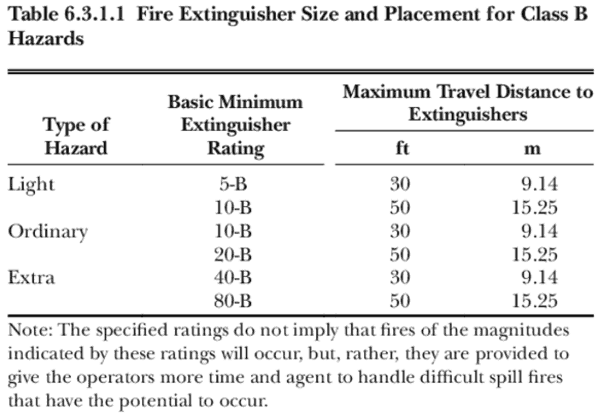
Class C-rated fire extinguishers are placed based on Class A and Class B requirements
Class C fires are simply A or B fires — or a combination of the two — that involve electrical equipment. As a result, placement for Class C fire extinguishers is based on the expected A or B hazards in the area.
From the 2022 edition of NFPA 10
6.4* Installations for Class C Hazards.
6.4.3 Because the fire is a Class A or Class B hazard, the fire extinguishers shall be sized and located on the basis of the anticipated Class A or Class B hazard.
Class K-rated fire extinguishers may be no more than 30 feet away
Class K extinguishers are designed for fires in commercial kitchens and should be placed near deep-fryers and other cooking surfaces. Barbecues, ovens, and other cooking appliances utilizing solid fuel, such as charcoal, require a K-rated extinguisher nearby if their fuel chamber, or firebox, is more than five cubic feet in size. An important note: “Class K” extinguishers are different than “Purple K” extinguishers, which are actually Class B:C. Purple K is simply the name of the dry chemical extinguishing agent in those specific devices.
From the 2022 edition of NFPA 10
6.6 Installations for Class K Hazards.6.6.2 Maximum travel distance shall not exceed 30 ft (9.1 m) from the hazard to the extinguishers.
6.7 Solid-Fuel Cooking Appliances. All solid fuel cooking appliances (whether or not under a hood) with fire boxes of 5 ft3 (0.14 m3) volume or less shall have at least a listed 2-A-rated water-type fire extinguisher or a 1.6 gal (6 L) wet-chemical fire extinguisher that is listed for Class K fires.
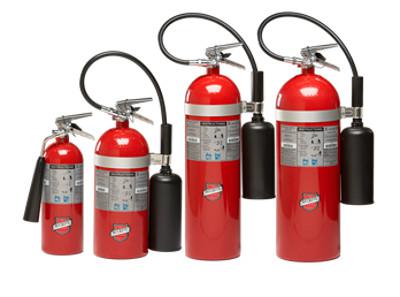
Choosing and placing fire extinguishers
Now that you know where should fire extinguishers be installed, you may need additional equipment. Take a look at QRFS’s selection of ABC-rated dry chemical extinguishers, BC-rated CO2 extinguishers, and Purple K extinguishers. Or jump straight to the extinguisher or accessory you need from the table below:
Each extinguisher is compliant with standards established by the NFPA, Department of Transportation, and the US Coast Guard. Matching fire extinguisher wall-mounting brackets, vehicle brackets, as well as extinguisher cabinets, covers, and other fire extinguisher accessories are available.
If you have any questions about placing or replacing your fire extinguishers, call us at 888.361.6662, email support@qrfs.com, or get in touch through our contact page.


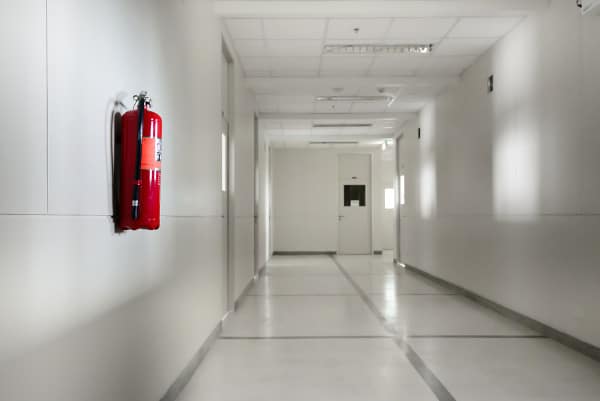
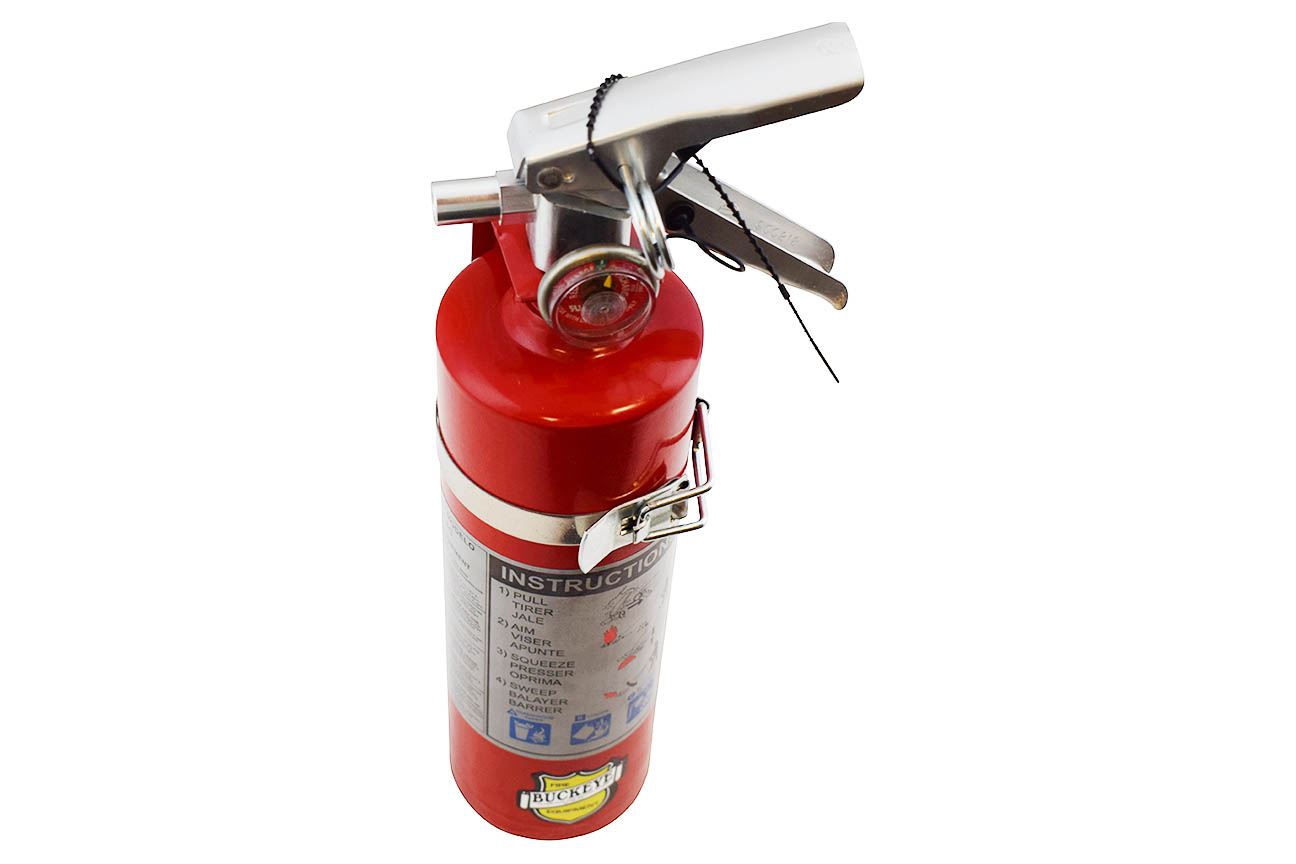
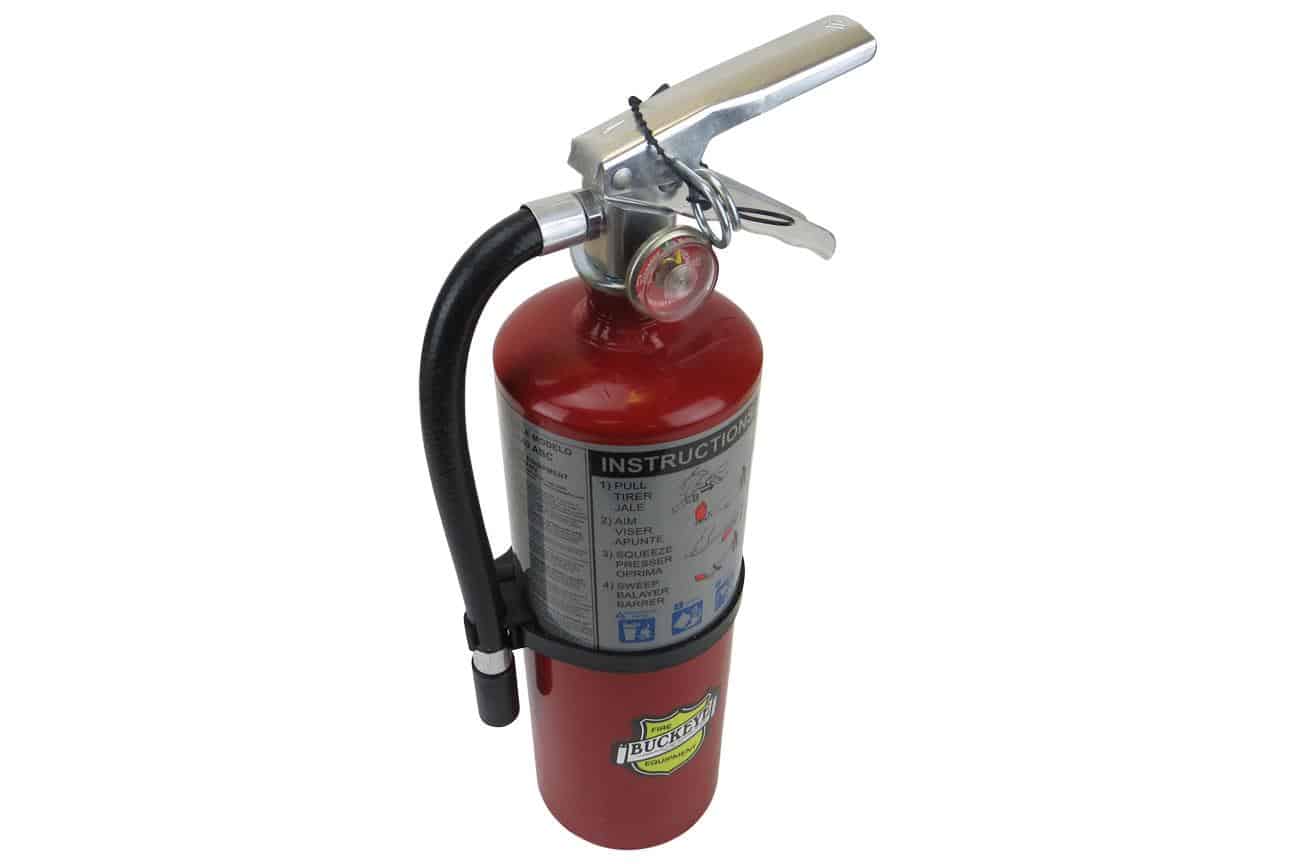
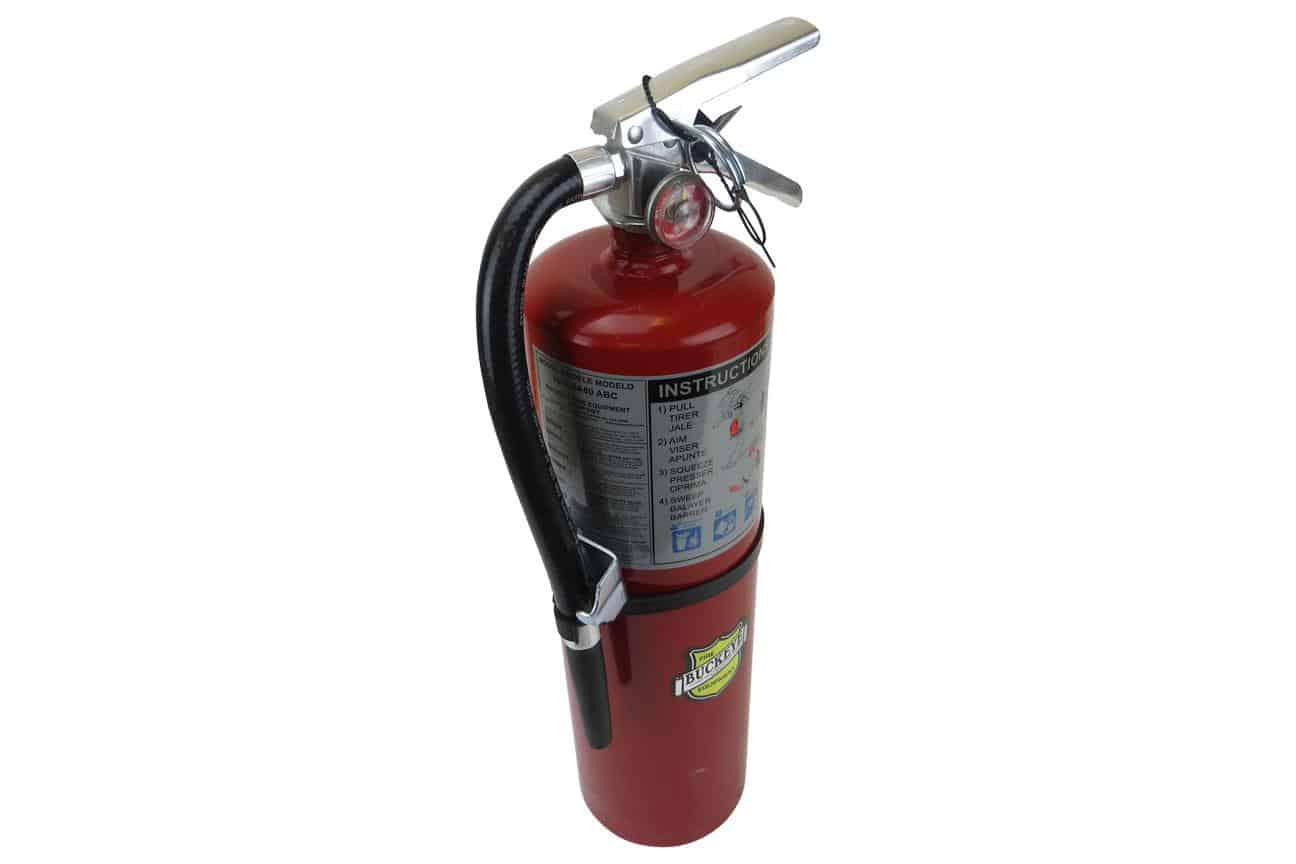
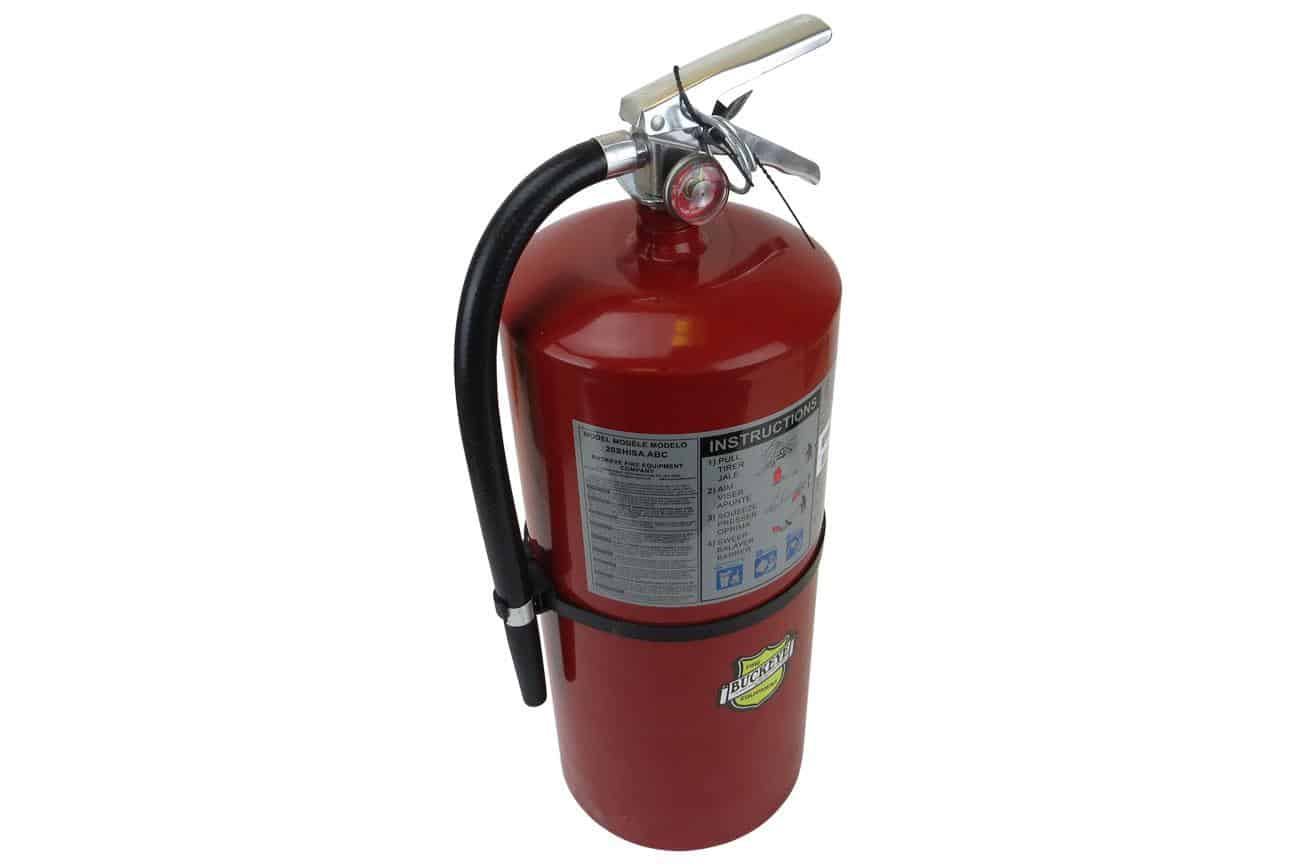
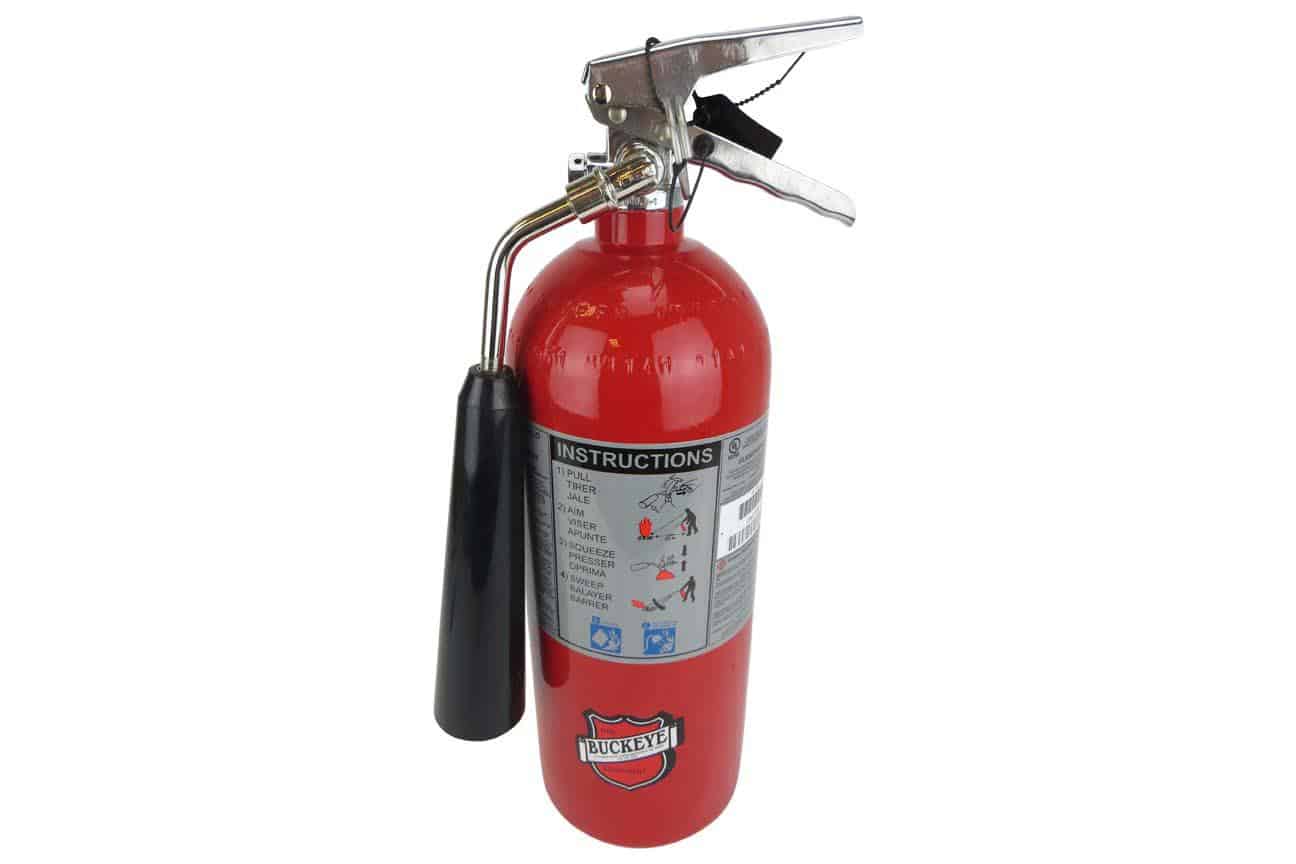
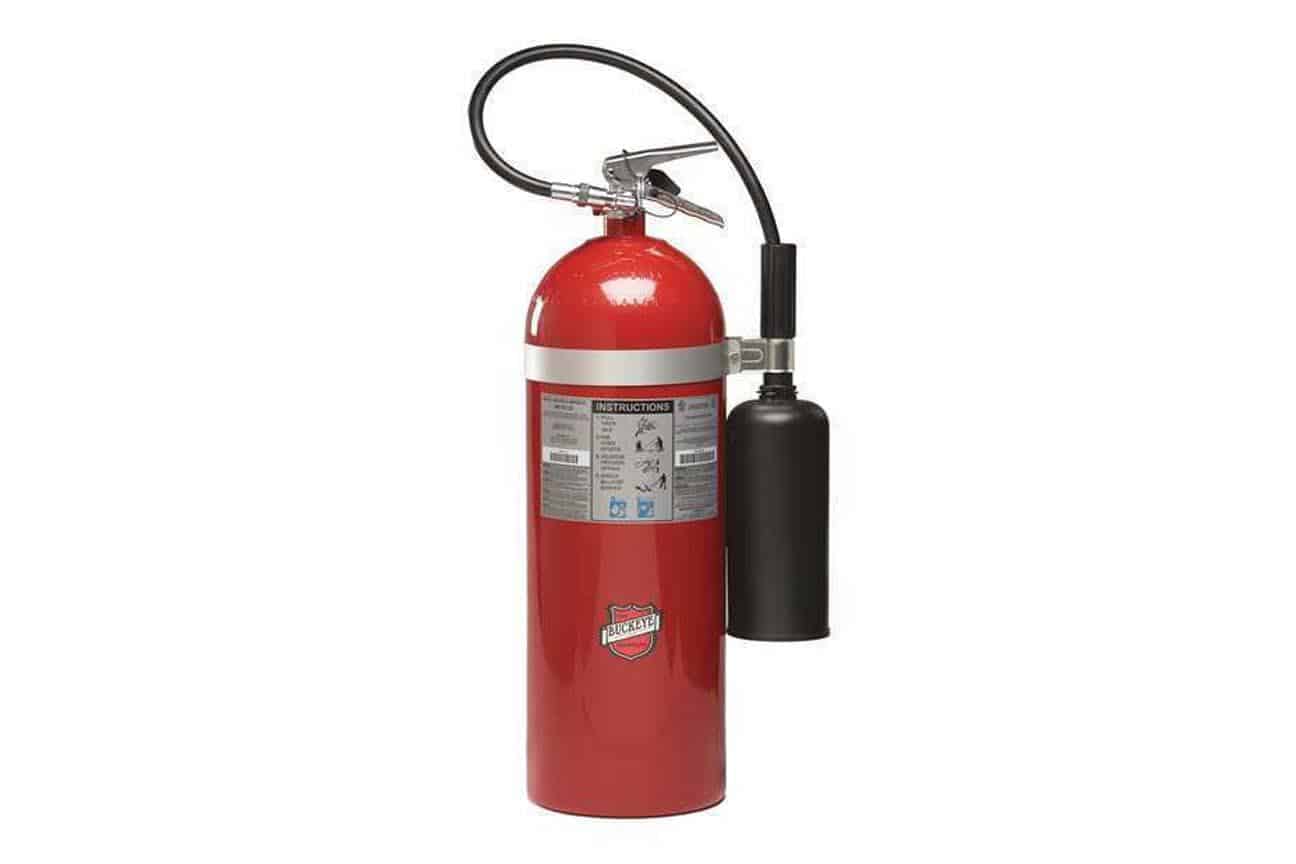
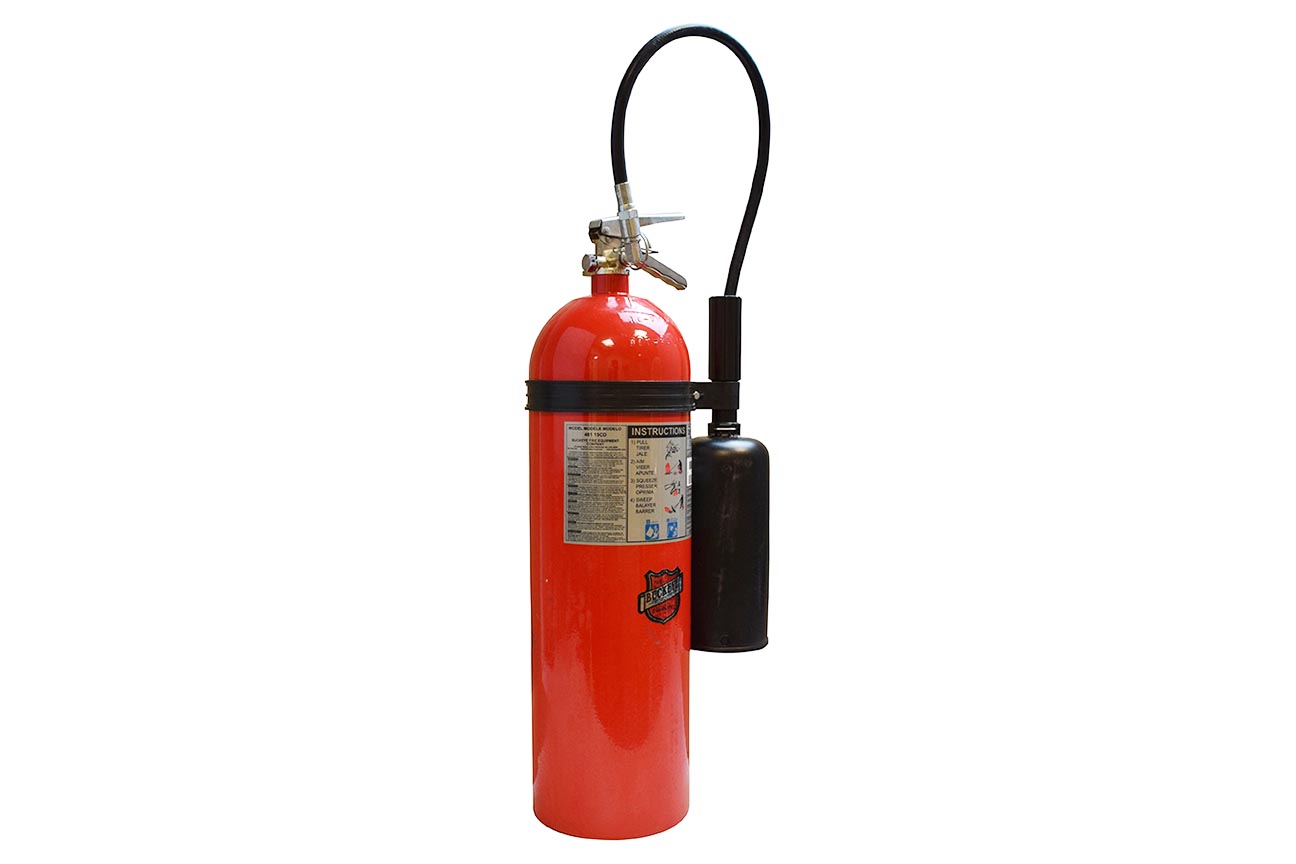

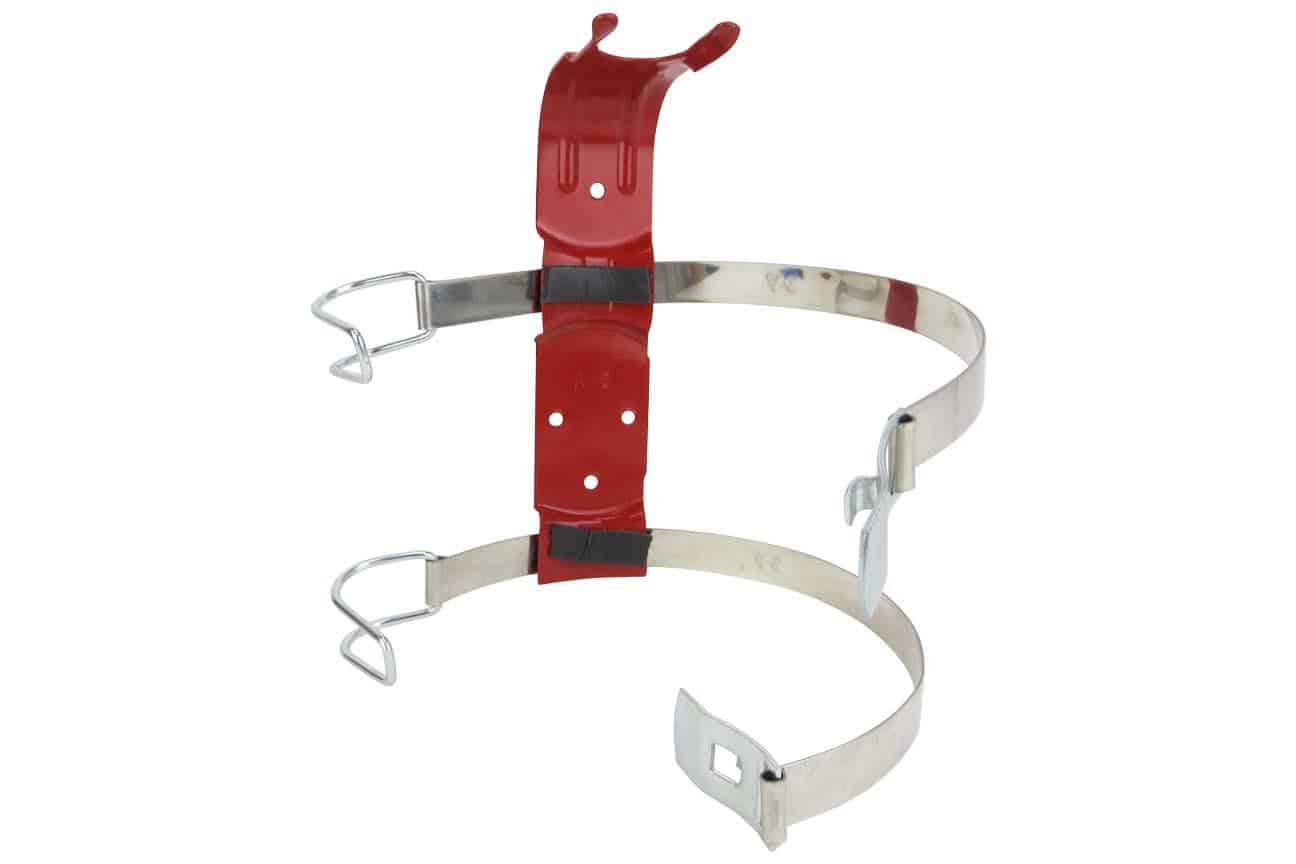
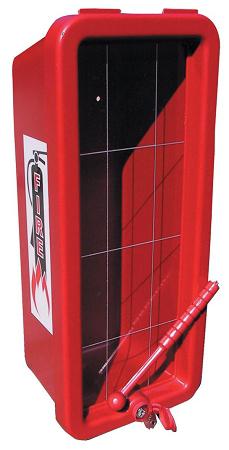
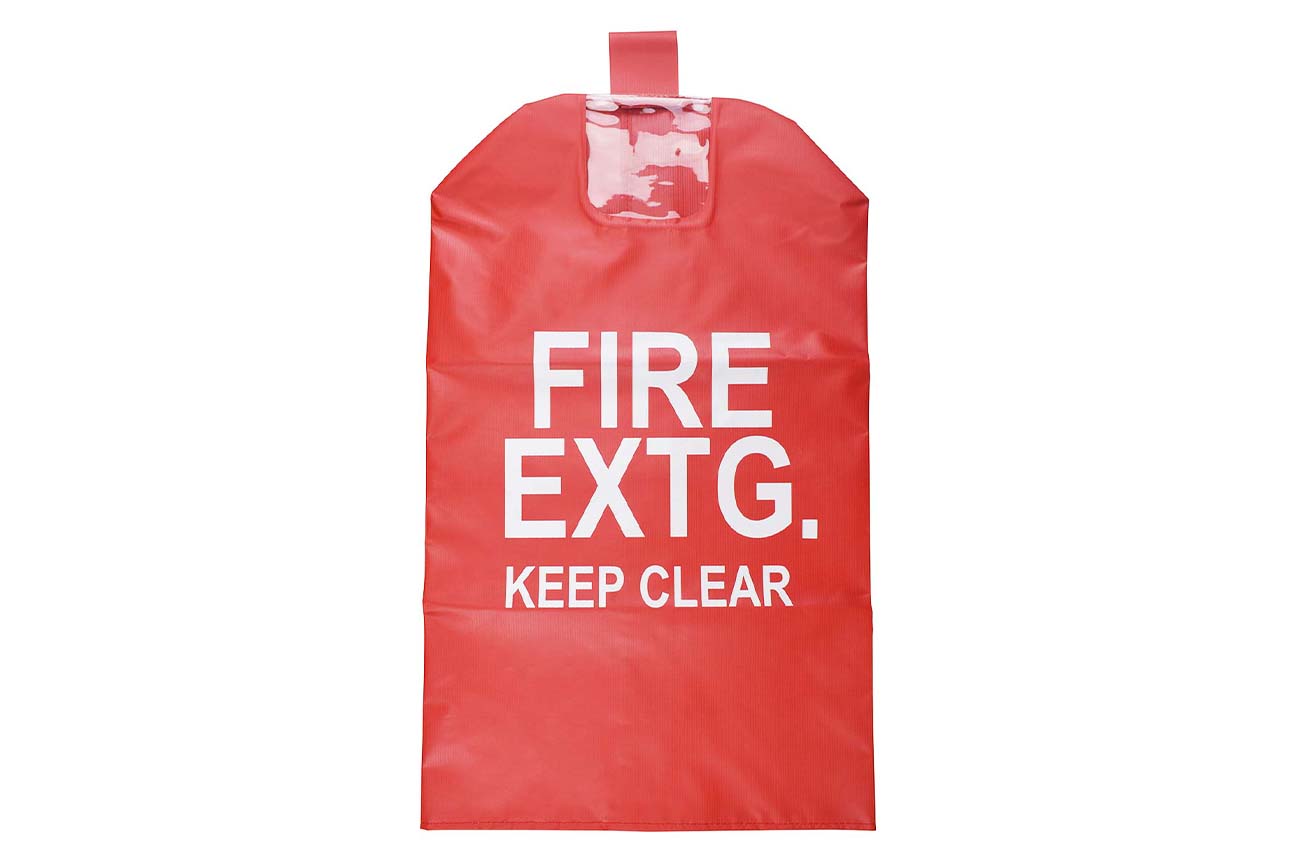
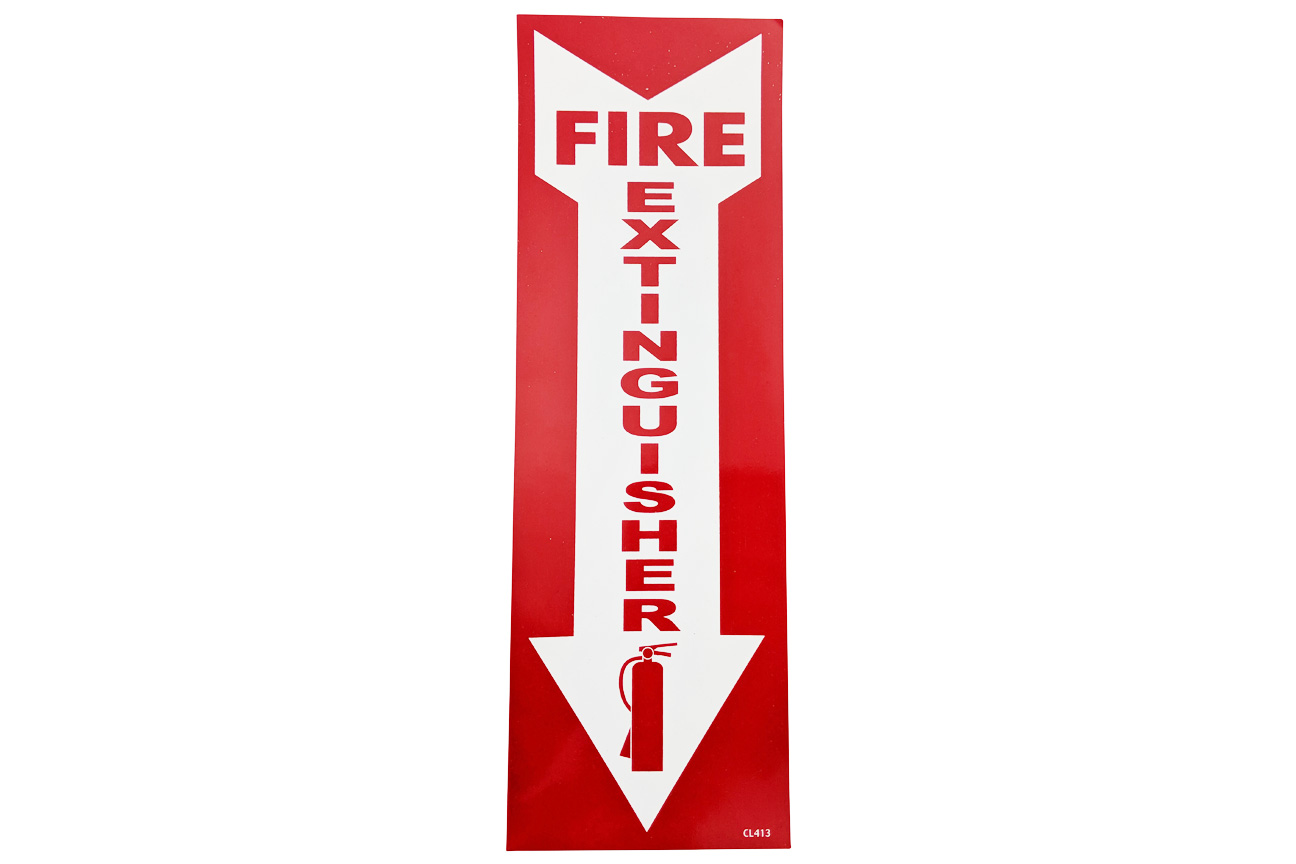
I hadn’t realized that there were different types of fire extinguishers for different hazards. My wife and I want to start a small restaurant together and want to make sure we follow the right safety codes when we do. We’ll have to do research and make sure we have the proper fire extinguishers where they need to be.
You will also need an Ansul system if your going to have fryers and cooktops which will also require routine inspections
It’s great time to learn this
tҺe website іѕ really good, I love your blog!
What is best location of installed Fire Extinguisher in vehicles, Please reply soon.
The blog is fabulous . Choosing the right fire-extinguisher is like in a situation of choosing between life and death.
BE WISE, STAY SAFE
Hello,
I am a new pharmacy manager, I want to replace my Fire extinguisher who do I contact? To our building insurance company?
Please advise
Aastha — Typically, the property owner and their representative are responsible for maintaining the fire protection systems and equipment.
To avoid putting workers in danger, fire extinguishers should be located throughout the workplace and readily accessible in the event of a fire. You can usually find them in hallways, laundry rooms, meeting rooms, kitchens, mechanical/electrical rooms, and near exit doors. Keep up the great work! Thank you so much for sharing great posts.
Well, I didn’t know there should be proper placement for them. I mean let’s admit it, we place them to where the easy access is. There’s no way i’m gonna do it again. Now where’s that fire extinguisher. (grin)
our office consist of 9000 Sq Ft. can you guide me how many extinguishers i need to placed.
Sebastian — This blog is a pretty good general guide, but if you would like a specific assessment, we recommend submitting your question through QRFS Ask A Fire Pro. Click the link to submit your question with some information about your building or system, and a fire protection professional will provide a detailed answer based on standards and codes. Our pros include AHJs, contractors, engineers, and code experts with 150+ years of combined experience!
Where do I find a ruling that states that a fire extinguisher can’t be removed even for service without a replacement or loaner. ?
What is the RULE that states you cannot remove a fire Extinguisher from a public property without a replacement or loaner should it require service
Bill — For code questions like this, you can try our Ask a Fire Pro service. Click the link to submit your question with some information about your building or system, and a fire protection professional will provide an answer based on standards and codes. Our pros include AHJs, contractors, engineers, and code experts with 150+ years of combined experience!
In outdoor process plant areas (like refineries etc), doe extinguishers are required? if yes how to select and place them?
For specific code and system application questions like this, you can try our Ask a Fire Pro service. Click the link to submit your question with some information about your building or system, and a fire protection professional will provide an answer based on standards and codes. Our pros include AHJs, contractors, engineers, and code experts with 150+ years of combined experience!
Thanks for your enthralling Blog!
I need guidance on how many fire extinguishers to place for my Church in Lagos, Nigeria . It has three floors:
1. Ground Floor:
* Open Auditorium of 180m2 and raised stage of 120m2;
* Children’s Auditorium of 40m2;
* Toilets for Males- 18m2;
* Toilets for Female – 18m2;
* Front and Back Staircase.
2. First Floor Floor:
* Eight Offices , each 15m2,on both sides of a corridor 16m2 ;
* Two Toilets.
3. Third Floor:
* Two small Offices with Toilets, each 12m2;
* Open Auditorium -96m2.
4. Out house of Generatorhouse – 9m2.
5. Drive way for car park – of total area 64m2.
Thank you.
Arc. John ,
BASA Limited
*Architects * Facilities Management
John — For code and specific system application questions like this, you can try our Ask a Fire Pro service at the higher price tier. Click the link to submit your question with some information about your building or system, and a fire protection professional can provide an answer based on standards and codes. Please note that we are unaware of local fire code requirements in Nigeria, so any answer would be based on NFPA model code.
Thank you for sharing its very informative.
What is the requirement for portable fire extinguisher spares onsite of a facility that has over 30 existing portable fire extinguishers
Kenneth — The essential fire extinguisher requirements are to have a certain number of working extinguishers of types relevant to the onsite hazards no more than a certain distance away from each other, and to keep them working (charged and ready to go). They must also be easily accessible according to various rules.
6.1.2 Extinguisher Readiness. Portable fire extinguishers shall be maintained in a fully charged and operable condition and shall be kept in their designated places at all times when they are not being used.
NFPA 10 does not have a specific reference to “spare fire extinguishers.” It does, however, say:
6.1.1.2 Additional extinguishers shall be permitted to be installed to provide more protection.
I have a 50 year old garage that is used to store 2-4 boat for the winter at a yatch club. Do I have to install portable fire extinguishers?
Richard — For specific code questions like yours, you can try our Ask a Fire Pro service. Click the link to submit your question with some information about your building, and a fire protection professional will provide an answer based on best practices, standards, and codes. Our pros include AHJs, contractors, engineers, and code experts with 150+ years of combined experience!
Please, do fully sprinklered buildings require portable fire extinguishers?
Thanks
Manuel — There are many aspects of fire code that are conditional, based on both the presence of certain fire protection systems and the occupancy type (nature of the building and its use). For equipment and code questions like this, you can try our Ask a Fire Pro service. Click the link to submit your question with some information about your building and system, and a fire protection professional will provide an answer based on best practices, standards, and codes. Our pros include AHJs, contractors, engineers, and code experts with 150+ years of combined experience!
NFPA 1, 13.6.1.2
In storage areas where forklift, powered industrial truck, or cart operators are the primary occupants, fixed extinguishers, as specified in NFPA 10, need not be provided when:
(1) Use of vehicle-mounted extinguishers is approved by the AHJ.
(2) Each vehicle is equipped with a 10 lb, 40-A:80-B:C extinguisher affixed to the vehicle using a mounting bracket approved by the extinguisher manufacturer or the AHJ for vehicular use.
(3) Not less than two spare extinguishers of equal or greater rating are available onsite to replace a discharged extinguisher.
(4) Vehicle operators are trained in the proper operation and use of the extinguisher.
(5) Inspections of vehicle-mounted extinguishers are performed daily.
If i interpret this correctly since i only have 2 people working in the warehouse i only need the 10lb FE on the forklifts not mounted every 75 feet on the racks themselves.
S. Harrison — In addition to the other conditions of that section, a key condition is “Use of vehicle-mounted extinguishers is approved by the AHJ.” Thus, you should confirm your interpretation with your AHJ and verify you have approval. Thanks for reading!